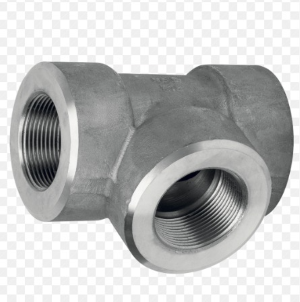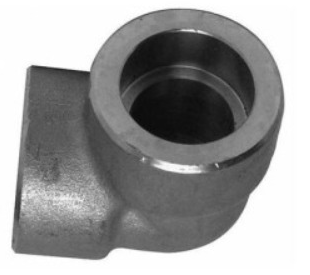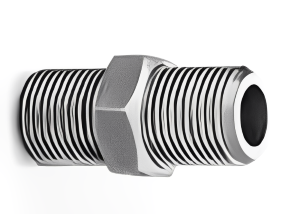Class 3000 fittings are stalwarts in the complex world of industrial fittings. They guarantee strong connections in various applications. This guide explores the design, applications, and advantages of Class 3000 fittings. Expert recommendations are also included.
What is a Class 3000 Fitting?
Class 3000 fittings are crucial in industrial settings for strong connections. These fittings have a high-pressure capability and precise engineering. They are crucial in various industries.
Class 3000 fittings handle high-pressure situations. They are essential for reliable, leak-free connections. These fittings provide the strength needed for seamless operations. They are used in hydraulic systems and pneumatic applications.
What Schedule is Class 3000 Equivalent To?
Understanding the schedule of fittings is crucial for compatibility in industrial settings. Class 3000 fittings align seamlessly with other components in a system. They are equivalent to a specific schedule.
Class 3000 fittings are typically associated with Schedule 80, indicating a thicker pipe wall. These fittings can handle high pressures, making them suitable for industrial use.
The Core Design of Class 3000 Fittings
Class 3000 fittings have a well-designed structure that enhances their strength. The design also ensures durability.
➡️ Materials for Maximum Strength
Class 3000 fittings are often made from stainless steel, carbon steel, or alloys. The materials are selected for their ability to handle high pressure. They also resist corrosion and ensure the fittings last a long time.
➡️ Precision Engineering for Robust Performance
Class 3000 fittings are designed with precision engineering. This ensures a seamless fit for each component in the system. The threads are carefully made. The angles are also carefully made. The connections are carefully made. They are made this way to ensure strong performance. The performance is strong even in tough industrial environments.
Applications of Class 3000 Fittings
Class 3000 fittings are used in many industries to improve systems. They enhance reliability and efficiency in different applications.
Class 3000 fittings are used in various industries like oil, gas, and manufacturing. These fittings provide reliable and high-performance connections. They are used in a variety of industries and are adaptable. They work well in hydraulic and pneumatic systems.
Advantages of Class 3000 Fittings
It is crucial to understand the advantages of Class 3000 fittings. This will help you make informed decisions about using them in specific applications.
➡️ High-Pressure Capability
One of the primary advantages of Class 3000 fittings is their ability to handle high-pressure situations. These systems need to maintain pressure integrity for seamless operations. This capability makes them ideal for such systems.
➡️ Resistance to Corrosion and Environmental Factors
Class 3000 fittings are made from durable materials. They resist corrosion and environmental factors well. The resistance of the fittings makes them reliable and functional. They can withstand challenging conditions and last a long time.
➡️ Longevity and Durability
Class 3000 fittings have a longer lifespan due to sturdy materials and precise engineering. Their durability reduces the need for frequent replacements and maintenance. This, in turn, lowers overall operational costs in the long run.
Common Types of Class 3000 Fittings
To understand the versatility of Class 3000 fittings, we need to explore the common types. These types cater to various connection needs.
➡️ Elbows, Tees, and Crosses
Class 3000 Forged — Tee Class 3000 Forged — Elbow
Class 3000 fittings are available in various configurations. Elbows are used to change direction. Tees connect branches. Crosses intersect lines. Each type serves a specific purpose, providing flexibility in designing intricate systems.
➡️ Nipples and Couplings
Class 3000 Fittings — Nipple 1/2” BSP
Nipples and couplings are vital for connecting pipes and components seamlessly. These fittings are designed for easy assembly. They also maintain high-pressure capabilities in the system.
Choosing the Right Material
The selection of materials greatly impacts the performance of Class 3000 fittings. It also determines their suitability for specific applications.
Class 3000 fittings are available in various materials, each offering unique characteristics. Stainless steel is resistant to corrosion. Carbon steel is strong. Alloy options combine properties for industrial needs.
The right material depends on factors like the operating environment. The right material also depends on the fluid characteristics and pressure requirements. Material selection impacts performance, efficiency, and lifespan of the system.
Installation Best Practices
Achieving optimal performance from Class 3000 fittings requires adherence to recommended installation practices.
➡️ Ensuring Proper Torque for Leak-Free Connections
Proper torque application during installation is critical for creating leak-free connections. Following the torque values specified by the manufacturer ensures secure fittings. This prevents potential leaks that could compromise system integrity.
➡️ Correct Thread Engagement Techniques
Proper engagement of threads is vital for Class 3000 fittings to function well. Properly engaging threads is essential. Avoid over-tightening or under-tightening. This preserves fittings’ ability to endure pressure and environmental stresses.
Industry Standards and Compliance
Working with Class 3000 fittings requires understanding industry standards. Ensuring compliance with regulations is also imperative for this work.
Class 3000 fittings must adhere to specific standards. These standards cover their design, manufacturing, and performance criteria. Being familiar with these standards is crucial. It helps in selecting, installing, and maintaining fittings as expected by the industry.
Ensuring compliance with safety regulations and obtaining relevant certifications is paramount. Compliance ensures reliable Class 3000 fittings. Compliance also promotes safety, reducing accidents and system failures.
Maintenance Tips for Longevity
Regular maintenance practices enhance the durability of Class 3000 fittings. These fittings remain reliable in industrial settings.
➡️ Regular Inspection and Monitoring
Implementing a regular inspection schedule helps detect wear and damage. It also identifies potential issues with Class 3000 fittings early. Regular monitoring allows for quick identification and resolution of performance issues. This prevents unexpected periods of inactivity.
➡️ Recommended Cleaning and Lubrication Practices
Cleaning Class 3000 fittings is part of routine maintenance practices. Lubricating them helps their ongoing functionality. Proper cleaning removes debris and contaminants. This can compromise the fittings’ performance. Lubrication lowers friction and guarantees smooth functioning.
Comparative Analysis with Other Fittings Classes
Understanding how Class 3000 fittings compare with alternatives provides valuable insights for decision-making.
➡️ Strengths and Weaknesses in Comparison
A comparative analysis examines the strengths and weaknesses of Class 3000 fittings. It compares them to other classes. The evaluation helps find the best fittings for specific applications. It considers factors like pressure, material compatibility, and environment.
➡️ When to Opt for Class 3000 Over Alternatives
Knowing when to opt for Class 3000 fittings over alternatives is crucial. The decision is influenced by factors. These include the need for high-pressure capability, corrosion resistance, and durability. This section offers practical guidance for choosing Class 3000 fittings. It is based on specific requirements.
Expert Insights and Recommendations
Industry professionals provide insights and recommendations for Class 3000 fittings. These experts help maximize the benefits of these fittings.
➡️ Advice from Industry Experts
Industry experts share their perspectives on the advantages and optimal use of Class 3000 fittings. Their advice provides practical considerations for individuals and organizations. It also offers valuable tips to leverage the strengths of these fittings.
➡️ Pro Tips for Maximizing the Benefits of Class 3000 Fittings
Incorporating professional tips improves the use of Class 3000 fittings. It also enhances their maintenance, making them more effective. These tips cover different aspects. They include installation techniques and material selection nuances. They also provide strategies for extending the lifespan of fittings. These tips are specifically for challenging environments.
Interested to know more about the hydraulic fittings? Check out these resources ⤵️:
Bull Hose Fitting: Navigating The Basics
Half The Size, Double The Impact: Pipe Half Couplings Explained
Knowing The Excellence: Understanding Forged Fittings And Standards
Conclusion
Class 3000 fittings are crucial for strong connections in high-pressure industries. This guide covers core design principles, practical applications, and maintenance tips. It serves as a comprehensive resource for anyone in industrial fittings.
This guide is designed to cater to diverse informational needs. This is for experienced professionals who want to review their knowledge. It is also for newcomers who want to learn about Class 3000 fittings. Staying informed about the latest developments in fittings is crucial. This is because technology and industry standards are evolving.
Post time: Jan-05-2024




